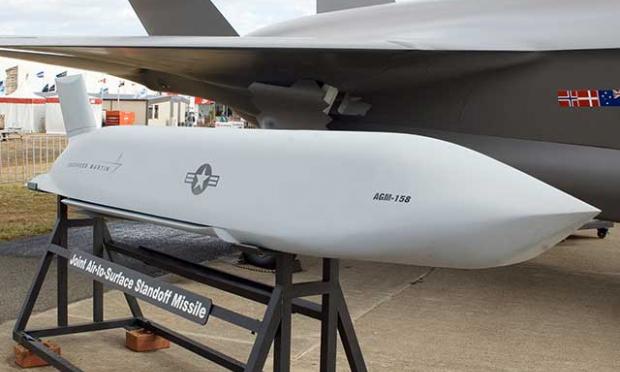In our recent article we mentioned three (3) new major indications of an imminent Israeli military strike against Iran which were:
Indications of an Israeli military attack against Iran
1. Israeli Prime Minister Netanyahu's extremely threatening statements about a military strike against Iran.
2. Israel's accusations of Iran's continued enrichment of Uranium, after the IAEA's inspection found particles enriched to 83.7%, very close to the 90% required for it to obtain Nuclear weapons.
3. Equipping Iran with Russian Sukhoi Su-35 Flanker-Es, which combined with the Bavar-373 AD anti-aircraft system, will be a force to be reckoned with, significantly hampering an Israeli air strike with US assistance against of its nuclear facilities.
Preparation on bombing Iran and the US
Now comes to be added to the above indications, an additional and perhaps the most important one, coming from the USA, which with its B-1B bomber hit a target in Jordan with an AGM-158A missile.
Considering that the American Bomber took off from Great Britain, while the AGM-158A missile weighing 450 kg, causes a penetrating fragmentation explosion, being suitable for penetrating hard targets such as underground warehouses and command centers, destroying them.
Our assessment is that both the flight distance, UK-Jordan of the American B-1B bomber, and the type of missile it used, is a preparation by the US of bombing Iran's nuclear facilities.
Besides, Bulgarian media in an article related to the subject states that, "a bomber of the United States Air Force carried out a large training flight, which some media are already calling as "unprecedented", as the flight was from Britain to the Persian Gulf". highlighting the following in our opinion main points:
"The bomber was armed with several types of weapons, including the AGM-158A Joint Air-to-Surface Standoff Missile (JASSM) and the GBU-39.
According to a report posted on Twitter, the B-1B fired an AGM-158A at a target in Jordan. The target was 30 kilometers west of Muwaffaq Salti AB"
The US described the flight as "unprecedented" and "historic" as it was the first time an American B-1B had flown.
What is an AGM-158A missile?
The AGM-158A missile is a precision-guided munition that uses a combination of GPS and inertial navigation systems to guide it to its target. This guidance system allows the missile to navigate precisely to its target, even in adverse weather conditions or areas with limited visibility.
In addition to GPS and inertial navigation systems, the AGM-158A missile also has a data link that allows it to receive updates and guidance from ground or airborne platforms.
This feature allows the missile to redirect to a different target or adjust its flight path in real time.
The objectives of AGM-158
The AGM-158A missile is primarily designed to destroy high value, heavily protected, fixed and mobile targets. These targets include command and control centers, air defense systems, communications infrastructure and other critical military installations.
In addition, the AGM-158A missile can be used to attack naval vessels, including aircraft carriers and other large warships. The long range and high speed capabilities of the missile make it difficult for enemy ships to avoid or intercept it.
The AGM-158A missile has a 1,000-pound warhead, meaning it weighs about 450 kilograms. Its warhead is designed to penetrate "hard targets" such as underground warehouses and command centers.
B1-B and AGM-158A – a deadly combination
The fact is that the B-1B bomber can carry a very large payload.
But one of the main advantages of the B-1B that makes its combination with the AGM-158A "deadly" is the flight height, since the higher the height, the longer the range of the missile.
This allows the missile to be launched from a greater distance, reducing the risk to the B1-B and increasing the probability of a successful mission.
The combination is dangerous for another reason, since the B-1B bomber has a range of over 6,000 miles, which is much longer than most fighter jets.
This allows the B-1B to fly longer missions and engage targets further away.




